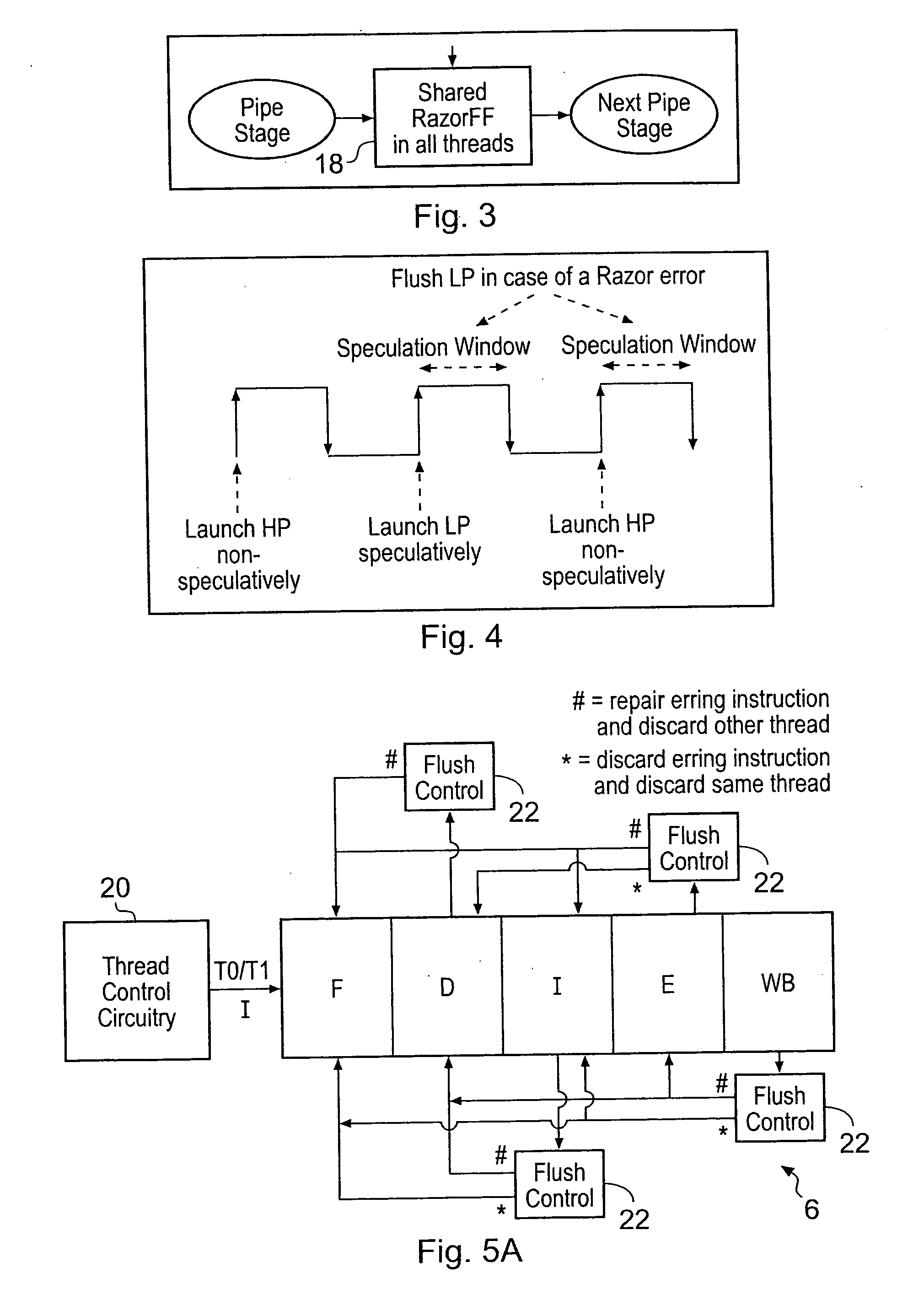Error recovery following speculative execution with an instruction processing pipeline
- Summary
- Abstract
- Description
- Claims
- Application Information
AI Technical Summary
Benefits of technology
Problems solved by technology
Method used
Image
Examples
Embodiment Construction
[0061]FIG. 1 schematically illustrates a data processing system in the form of an integrated circuit for performing data processing operations on data values D under control of a stream of program instructions I. The program instructions I are supplied to an instruction processing pipeline 6 containing a plurality of processing stages. One or more of these stages is a decode stage and an instruction decoder 4 is responsive to program instructions at that decode stage to generate control signals supplied to other portions of the data processing system 2 in order to control and configure them to perform the required data processing operations. Other elements of the data processing system 2 include a register bank 8, a multiplier 10, a shifter 12 and an adder 14. These data processing circuit elements 8, 10, 12, 14 are configured and controlled by the control signals from the decoder 4 to perform the data processing operations required by the program instructions as they are being pass...
PUM
 Login to View More
Login to View More Abstract
Description
Claims
Application Information
 Login to View More
Login to View More - R&D
- Intellectual Property
- Life Sciences
- Materials
- Tech Scout
- Unparalleled Data Quality
- Higher Quality Content
- 60% Fewer Hallucinations
Browse by: Latest US Patents, China's latest patents, Technical Efficacy Thesaurus, Application Domain, Technology Topic, Popular Technical Reports.
© 2025 PatSnap. All rights reserved.Legal|Privacy policy|Modern Slavery Act Transparency Statement|Sitemap|About US| Contact US: help@patsnap.com



